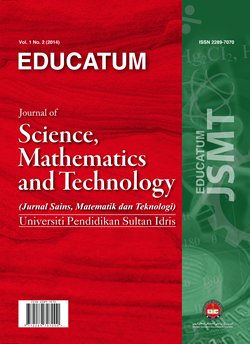Evaluating eco-friendly soil neutralizers: The use of pulverized eggshells and clam shells in enhancing rice field soil acidity
DOI:
https://doi.org/10.37134/ejsmt.vol11.1.10.2024Keywords:
Alternative soil neutralizer, commercially- made soil neutralizer, soil acidityAbstract
Soil acidity is an important factor in the yield of rice crops. This article aims to determine the effectiveness of alternative soil neutralizers in agricultural land in the form of utilizing the calcium carbonate and calcium oxide content of pulverized eggshells and clam shells. This study used an independent T-test to determine the difference between the alternative soil neutralizer and commercially- made soil. A total of 45 samples were gathered: these are, along the side of the road, along the irrigation, and away from the road and irrigation. These sites are divided into 4 corners, 1 at the center, and then by 3 based on the depth of the soil sample, separated by 6 inches from top, middle, and bottom. The soil samples were mixed with these neutralizers with a 1:1:2 ratio and recorded a day, three days, and seven days. When mixed with the alternative neutralizers, the results showed a mean of 7.71 pH after seven days while the commercial neutralizers showed a mean of 7.84 pH. The result shows that the alternative neutralizers have a very close value to commercial neutralizers which indicates that they can be used to solve soil acidity at a lower expense. Although the T-test results showed that there is a significant difference between the two neutralizers with a 0.0044 pH value, the difference is just very little and still exhibits an effective result. This implies that the alternative soil neutralizer could be used as an effective, cost-efficient, and eco-friendly substitute.
Downloads
References
Jane-Atilano-Sabalberino, A. (2023). Forecasting value of production of palay and retail price of rice in the Philippines using ARIMA modelling. World Journal of Advanced Research and Reviews, 17(3), 035-054. https://wjarr.com/content/forecasting-value-production-palay-and-retail-price-rice-philippines-using-arima-modelling
Valera, H. G., & Pede, V. O. (2023). What do we know about the future of rice in relation to food system transformation?. CGIAR News. Retrieved from https://hdl.handle.net/10568/128748
Bhunia, S., Bhowmik, A., Mallick, R., & Mukherjee, J. (2021). Agronomic efficiency of animal-derived organic fertilizers and their effects on biology and fertility of soil: A review. Agronomy, 11(5), 823. https://doi.org/10.3390/agronomy11050823
Srivastav, A. L. (2020). Chemical fertilizers and pesticides: role in groundwater contamination. In Agrochemicals detection, treatment and remediation (pp. 143-159). Butterworth-Heinemann. https://doi.org/10.1016/B978-0-08-103017-2.00006-4
Zhang, S., Zhu, Q., de Vries, W., Ros, G. H., Chen, X., Muneer, M. A., ... & Wu, L. (2023). Effects of soil amendments on soil acidity and crop yields in acidic soils: A world-wide meta-analysis. Journal of Environmental Management, 345, 118531. https://doi.org/10.1016/j.jenvman.2023.118531
Nagasinghe, I. U., Saito, T., Takemura, T., Kawamoto, K., Komatsu, T., Watanabe, N., & Kawabe, Y. (2023). Applicability of alkaline waste and by-products as low cost alternative neutralizers for acidic soils. ISIJ international, 63(2), 228-234. https://www.jstage.jst.go.jp/article/isijinternational/63/2/63_ISIJINT-2022-247/_article/-char/ja/
Ab Manan, W. N. A., & Ab Aziz, N. A. (2018). Optimization of soil pH by using calcium carbonate (CaCO3) obtained from seashell waste. Gading Journal for Science and Technology, 1(1), 81-86. https://ir.uitm.edu.my/id/eprint/31354/
Ameyu, T. (2019). A Review on the Potential Effect of Lime on Soil Properties and Crop Productivity Improvements. Journal of Environment and Earth Science, 9(2). https://core.ac.uk/download/pdf/234665407.pdf
Xu, D., Zhu, Q., Ros, G., Cai, Z., Wen, S., Xu, M., Zhanf, F., & Vries, W. (2022). Calculation of spatially explicit amounts and intervals of agricultural lime applications at county-level in China. Science of the Total Environment, 806(4). https://www.sciencedirect.com/science/article/abs/pii/S0048969721060332?via%3D
Saldanha, R. B., Rocha, C. G., Caicedo, A. M. L., & Consoli, N. C. (2021). Technical and environmental performance of eggshell lime for soil stabilization. Construction and Building Materials, 298(6). https://doi.org/10.1016/j.conbuildmat.2021.123648
Bordoloi, P. (2021). Lime Application for Higher Productivity of Potato (Solanum Tuberosum L.) and Managing Soil Acidity in Ri-Bhoi District of Meghalaya. Indian Research Journal of Extension Education, 21(2&3), 150-153. https://seea.org.in/uploads/pdf/2021-66-150-153.pdf
Casinillo, L., & Seriño, M. N. (2022). Econometric evidence on happiness and its determinants among rice farmers in Leyte, Philippines. Independent Journal of Management & Production, 13(5), 1026-1044.
Rossiter, M. W. (1971). Justus Liebig and the Americans: A Study in the Transit of Science, 1840-1880. Yale University. https://www.proquest.com/openview/a35055dd9257b72313f15829de097095/1?pq-origsite=gscholar&cbl=18750&diss=y
Popović, N.T., Lorencin, V., Strunjak-Perović, I., & Čož-Rakovac, R. (2021). Shell Waste Management and Utilization: Mitigating Organic Pollution and Enhancing Sustainability. Applied Sciences, 13(1), 623. https://doi.org/10.3390/app13010623
Summa, D., Lanzoni, M., Castaldelli, G., Fano, E. A., & Tamburini, E. (2022). Trends and opportunities of bivalve shells’ waste valorization in a prospect of circular blue bioeconomy. Resources, 11(5), 48. https://doi.org/10.3390/resources11050048
Litvinovich, A., Pavlova, O., Lavrishchev, A., Bure, V., & Saljnikov, E. (2021). Dynamics of soil pH after utilization of by-products of industrial rock processing as a calcareous material in acid soils. Communications in Soil Science and Plant Analysis, 52(2), 93-101. https://doi.org/10.1080/00103624.2020.1849267
Yang, X., Feng, Y., Zhang, X., Sun, M., Qiao, D., Li, J., & Li, X. (2020). Mineral soil conditioner requirement and ability to adjust soil acidity. Scientific Reports, 10(1), 18207. https://www.nature.com/articles/s41598-020-75192-5
Bonfim-Silva, E. M., Nonato, J. J., Simeon, B. G., Alves, R. D. D. S., da Silva, M. I. P., & Silva, T. J. A. D. (2021). Mung bean shoot and root growth under wood ash as a soil acidity neutralizer and fertilizer. International Journal of Vegetable Science, 27(3), 303-314. https://doi.org/10.1080/19315260.2020.1789906
Bore, G. & Bedadi, B. (2015). Impacts of Land Use Types on Selected Soil Physico-Chemical Properties of Loma Woreda, Dawuro Zone, Southern Ethiopia. Science, Technology and Arts Research Journal, 4(4). https://www.ajol.info/index.php/star/article/view/145810
Rengel, Z. (2011). Soil pH, Soil Health and Climate Change. Soil Health and Climate Change, 29, 69-85. https://link.springer.com/chapter/10.1007/978-3-642-20256-8_4
Ahmad, N. A. B. (2021). Decomposition of calcium carbonate in cockle shell: Study on calcination temperatures. Retrieved from https://zaguan.unizar.es/record/112278/files/TAZ-TFG-2022-338.pdf?version=1
Downloads
Published
Issue
Section
License
Copyright (c) 2024 Franz Yanzy C. Vasquez, Aileen Grace P. Fuentes, Leomarich F. Casinillo

This work is licensed under a Creative Commons Attribution-NonCommercial-ShareAlike 4.0 International License.





